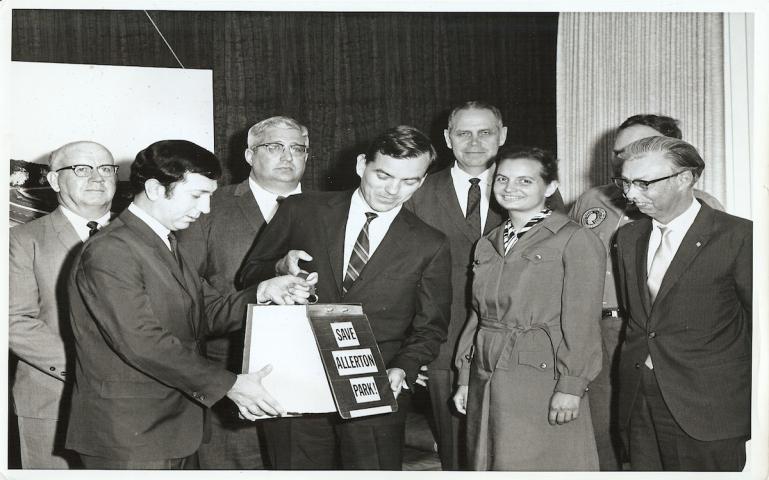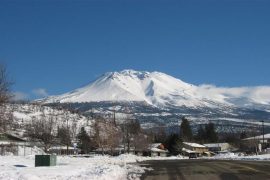
On an unusually warm January day, I drove 30 miles west from my home in Urbana, Illinois, to Allerton Park—a 1,517-acre woodland park and retreat center on the Sangamon River. I parked my car, leashed my dog, and headed down the trail. President Trump had just issued his executive order banning immigrants from seven majority Muslim countries, and my nerves were on edge. But as I strolled into the woods, the layers of tension slipped away, and my mind quieted. I crossed a meandering stream, watched a pileated woodpecker flit by, and stood on a ridge above the emerald-green river. The water trembled in the wind.
When you live in the flat, mono-cultured industrial landscape of east central Illinois, a patch of native river bottomland like the one preserved at Allerton Park is a rare gem. Not only does it sustain the physical and psychological health of the people who walk here, it supports the mission of the University of Illinois, which owns and manages the park. Ecologists conduct research here; departments make use of the Allerton mansion and grounds for retreats; art history students observe its collection of statuary; artists and musicians stage performances. It’s an invaluable public resource—one that would not be here today if it weren’t for a group of dedicated citizens who fought to save it 50 years ago, just as the nation’s environmental consciousness was stirring. Their fight serves as a an inspiring model for activists facing the Trump administration’s relentless attacks on the environment.
The battle for Allerton Park began with a hike by another woman through the very same woods. In the summer of 1967, Patricia Hannon and her family were vacationing at a camp adjacent to Allerton. One morning, she opted to take a guided tour of the woods while her husband Bruce stayed in the cabin, refinishing an old violin. On the hike, Patricia learned some devastating news: the U.S. Army Corps of Engineers planned to build a dam downriver; the resulting reservoir would flood Allerton Park.
Patricia flew back to the cabin to break the news to Bruce, who was so shocked that he sat down on the violin, crushing it beyond repair. It was just as well; another more pressing project was at hand.
That evening, around a camp bonfire, Patricia explained the situation to the gathered group of fellow campers. Five years earlier, in 1962, Congress had authorized the Army Corps’ proposed expenditure of $27 million to build the Oakley Dam, which would create a reservoir 8 miles long and 621 feet above sea level. The Corps argued that the project would control flooding, supplement the city of Decatur’s water supply, which had been compromised by agrichemical pollution and excessive siltation, and offer new recreational opportunities.
Then, Patricia went on, the previous year the Corps doubled the scope of its original plan: Oakley Dam would now rise to 60 feet, creating a reservoir 24 miles long and 636 feet above sea level at a new price tag of $64 million. This expanded reservoir would have the added benefit of diluting sewage from the city of Decatur (a process known as low-flow augmentation). It would also flood close to 1000 acres of Allerton Park.
Patricia circulated a petition, which quickly filled with signatures. On their way back home to Champaign-Urbana later that week, she turned to Bruce and said, “It’s yours, now.”

The Hannons were a traditional family unit. They had four small children, who were largely Patricia’s responsibility; Bruce won the family’s bread as an assistant professor of engineering at the University of Illinois. He was also a half-time graduate student, working on his PhD in Theoretical and Applied Mechanics. But he didn’t shirk from the challenge. He wrote a letter to the editor of the local newspaper that attracted other outraged citizens, who joined forces with Bruce. They called themselves The Committee on Allerton Park (COAP), and they began to organize.
Their immediate task was a massive education effort to recruit people to their cause. Bruce traveled the state, speaking to garden clubs, environmental organizations, and other interested groups—anyone who would have him. He devised a diagram—three rings, linked to form a triangle—to help him describe the way the Corps worked with elected officials and vested interests to push through its projects, regardless of their potential ecological damage. (Bruce’s model eventually became known as the Iron Triangle, and earned him a job offer from the University of Illinois’ political science department, even though his expertise was in engineering. He declined.) In the case of Oakley Dam, the three corners of the triangle—the players who stood to gain—were the Corps’ Chicago office, which would add another federally-funded project to its list of achievements while keeping its work force busy; the Decatur Chamber of Commerce, which welcomed the projected increase in tourism and development dollars; and Congressman William Springer, who was the representative for Illinois’ 22nd District. “A dam is concrete evidence that a congressman has done something for his or her district,” said John Marlin, a key COAP player who joined in 1970, when I spoke to him at his office. In other words, classic pork barrel politics.
The COAP’s plan was to pry…





